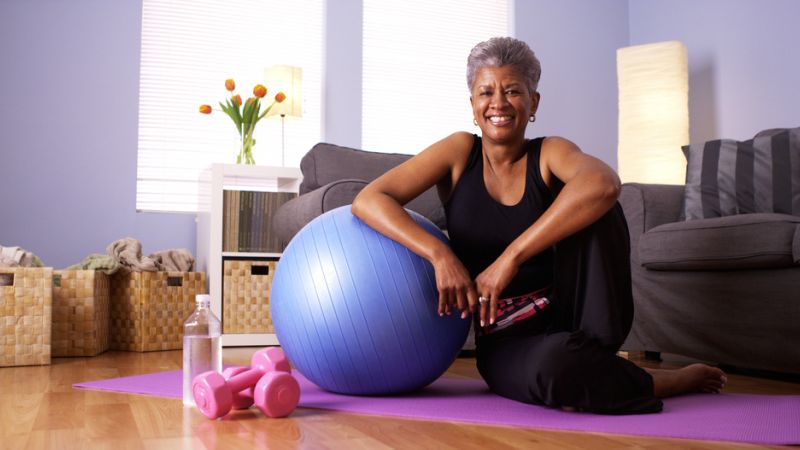Hip replacement surgery is an extremely common orthopedic procedure. Its success rate is extremely high and your likelihood of returning to regular, healthy and pain-free hip function is too. But this doesn’t mean that recovery is instantaneous or automatic. In order to restore full strength, mobility and comfort to your hips, you must be willing to make a commitment to a safe, suitable and sustainable exercise routine.
Exercise Caution
The American Academy of Orthopedic Surgeons reminds us that while hip replacement is quite common, it is also a major surgery and should be treated as such. This means that you should know what to expect in the early going. You will experience discomfort and short-term limitations in your mobility as well as a heightened susceptibility to re-injury. That said, it is important that you begin some physical activity right away, even if this is limited to pedaling your feet or pumping your ankles from your hospital bed.
According to the Academy, this type of movement aids in the healing process and reduces the likelihood of post-surgical blood clotting. The Academy indicates that you can anticipate an inpatient recovery time between 3 and 10 ten days in length, during which time you will be visited by a physical therapist. This therapist will show you how to use your new joint as well as offering some light exercises to practice.
Joint Effort
Use your time in the hospital to master your exercises and learn everything you can about your limitations going forward. While you are under the care of nurses, physicians and a physical therapist, take advantage of their knowledge. You significantly improve your speed and quality of recovery by working with your care providers to develop an exercise regimen that you can take home with you.
Depending on your recovery experience and your physical limitations, you may need to continue this collaboration after you’ve been discharged. Whether you are referred to a rehabilitation facility or to home care, you’ll be working one-on-one with a physical therapist to regain everyday functional capabilities, like sitting and rising, climbing the stairs, using the bathroom and walking with the aid of crutches or a walker. Beth Israel Deaconess Medical Center also advises that you should make arrangements with a relative or friend to provide assistance with everyday tasks like cooking and cleaning for your first week or two at home. Consider this caregiver as a resource for assistance in your exercise routine as well. It’s always safer to exercise in the company of others when possible.
Do It Everyday
Once you’ve returned home, it will be up to you to keep up with your exercises. You should be spending part of everyday walking around, positioning your joint properly when at rest and engaging in your routine of low-impact exercises. These might include isometric exercises for strengthening the joint and isotonic exercises for strengthening the muscles around the joint. Exercises that involve jogging, jumping, contact sports or heavy lifting are strictly inadvisable and likely will be for the foreseeable future. Beyond that though, only you, your physician and your physical therapist know what you can and can’t handle.
Work with your caregivers to develop an exercise and recovery plan, and follow your plan to the letter. And most importantly, don’t be discouraged by soreness or limitations. Take rests when you need them but stay committed to your routine. Doctors may be able to replace your hips but there’s no replacement for exercise!

